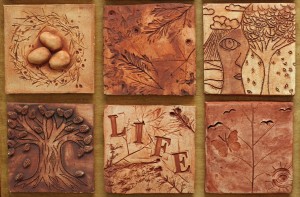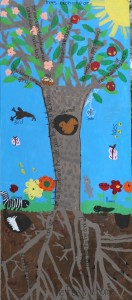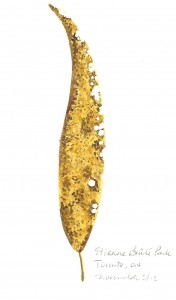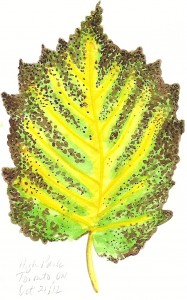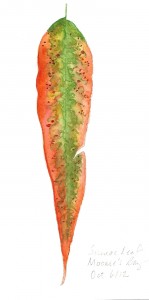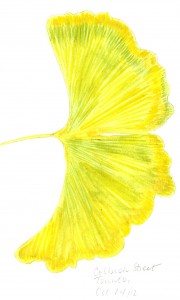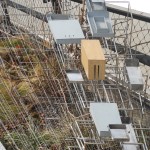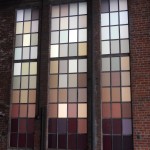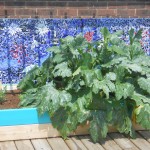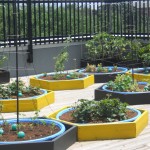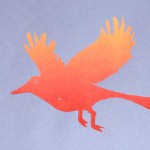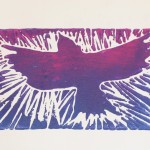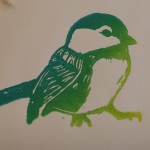ô May and June were busy months at OISE for environmental and sustainability ed – one of our success stories was to get four new environmental art projects up on the walls.ô These have been in development for about six months (check out my blog entries in December and February that track their creation.)ô I’m happy to be able to share some of the images of these works below, but you can see lots more on our OISE website (www.oise.utoronto.ca/eseô ). Look in theô ESE in Practice section.ô
ô The response to the artworks has been very positive; many people have told me that they have climbed the stairs looking for others, and that they love having children’s art in the building.ô The B.Ed students were thrilled at how good their work looks, as have others using the subway entrance, where it hangs.ô My favourite response has come from the grade 1 students who created the tree paintings; they wanted to climb up all 12 flights of stairs at OISE to celebrate their contribution to the ‘Take the Stairs’ campaign (and they did!)ô The most frequent response we have been hearing to these works has been “They are wonderful, when are we getting more?!”ô
ô Certainly these projects have all been challenging to collaboratively create, but worth the effort.ô The B.Ed students who worked on them have had a positive and rewarding learning experience, and the young students who were involved feel very proud that their work is on display in a public institution.ô The installations also appear to be a good way to remind our community about the power of art to capture attention and raise awareness about environmental issues.ô But the big question left hanging is whether they will actually change people’s behaviour, be it to take the stairs more frequently, to turn off a light, or to live more consciously (and sustainably) on the earth.ô So while these works may lead to more eco-artworks at OISE, they may also lead to my next research project…stay tuned!
